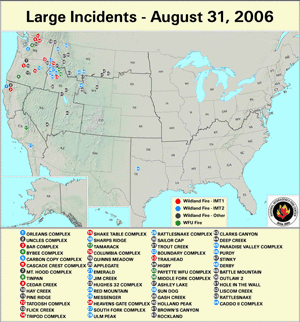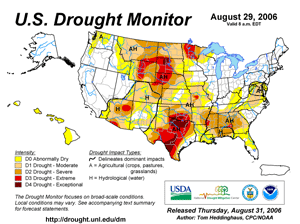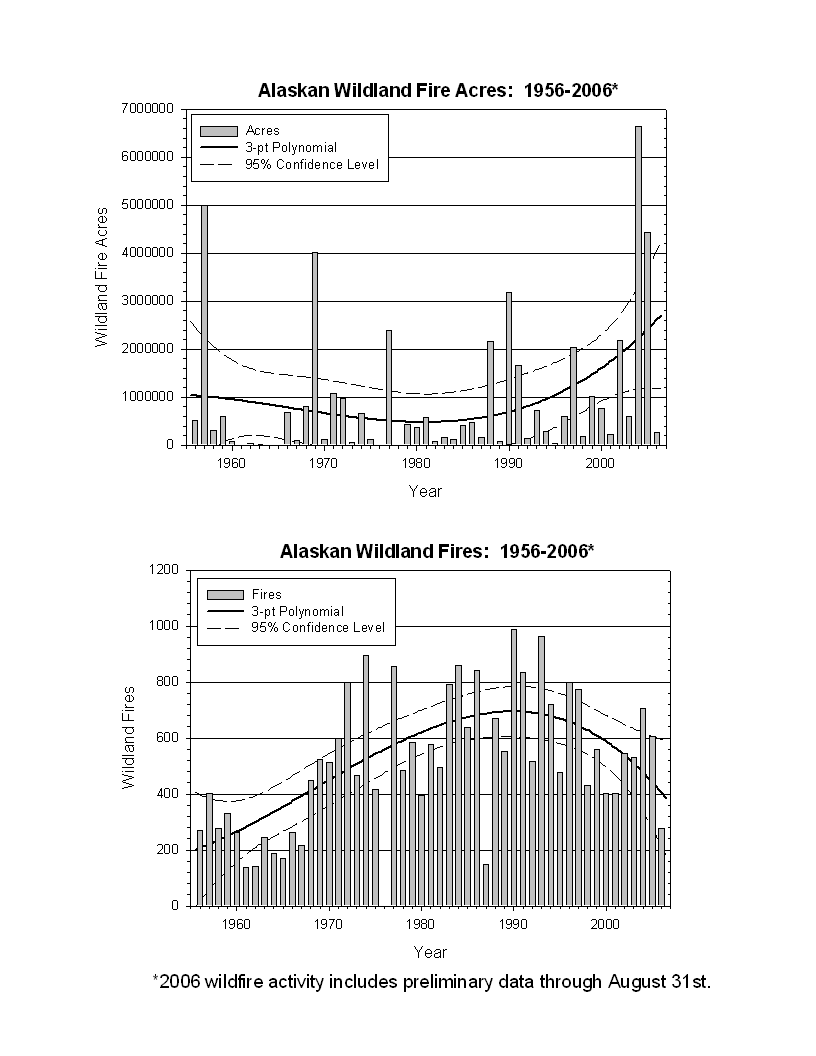Although drought persisted in the middle of the country in August, wildland fire activity was concentrated in the Northwest. Smoke and reduced visibilities are major impacts of the fires. A large smoke plume spreading into British Columbia from a Washington wildfire was graphically depicted by a satellite image.
As of August 27, there were more than 78,000 wildland fires across the Lower 48 States since the beginning of 2006, and over 7.5 million acres were burned, according to estimates from the National Interagency Fire Center. Of the total acreage, almost 2.5 million acres have burned in the Southern Area (which encompasses 13 states, Puerto Rico, the Virgin Islands and the District of Columbia).
| Totals as of early September | Nationwide Number of Fires | Nationwide Number of Acres Burned |
|---|---|---|
| 9/4/2006 | 83,638 | 8,098,182 |
| 9/4/2005 | 46,289 | 7,726,359 |
| 9/4/2004 | 55,512 | 7,584,945 |
| 9/4/2003 | 45,408 | 2,811,592 |
| 9/4/2002 | 63,162 | 6,328,733 |
| 9/4/2001 | 58,654 | 2,957,158 |
| 9/4/2000 | 74,571 | 6,566,520 |
Dead fuel moisture levels remained very dry in August. The 10–hour fuel moisture levels on August 30 were extremely dry, with the observed levels below 5% across a swath from California to the Dakotas.
Medium to larger fuels (i.e., the August 30 100–hr and August 30 1000–hr fuel moistures) also remained unusually dry over the past month, especially from southern California to southern Oregon and Idaho as well as in eastern Montana.
The Keetch–Byram Drought Index (KBDI), a widely used index for fire risk, had the largest potential for wildland fire activity in the contiguous U.S. along the West Coast and in the South from Texas to Georgia by the end of the month. In addition, the observed experimental fire potential index at the end of August was anomalously high for one large area from southern California northward into Oregon and Idaho and for another large area from Arizona through eastern Montana.
Historically, the graphs below show that in the lower 48 states, the number of fires has been decreasing since the 1980s. However, the number of acres burned has been increasing. In Alaska the pattern is similar to the lower 48 states, but the number of fires was the highest in the early 1990s.
 NOAA's National Centers for Environmental Information
NOAA's National Centers for Environmental Information



